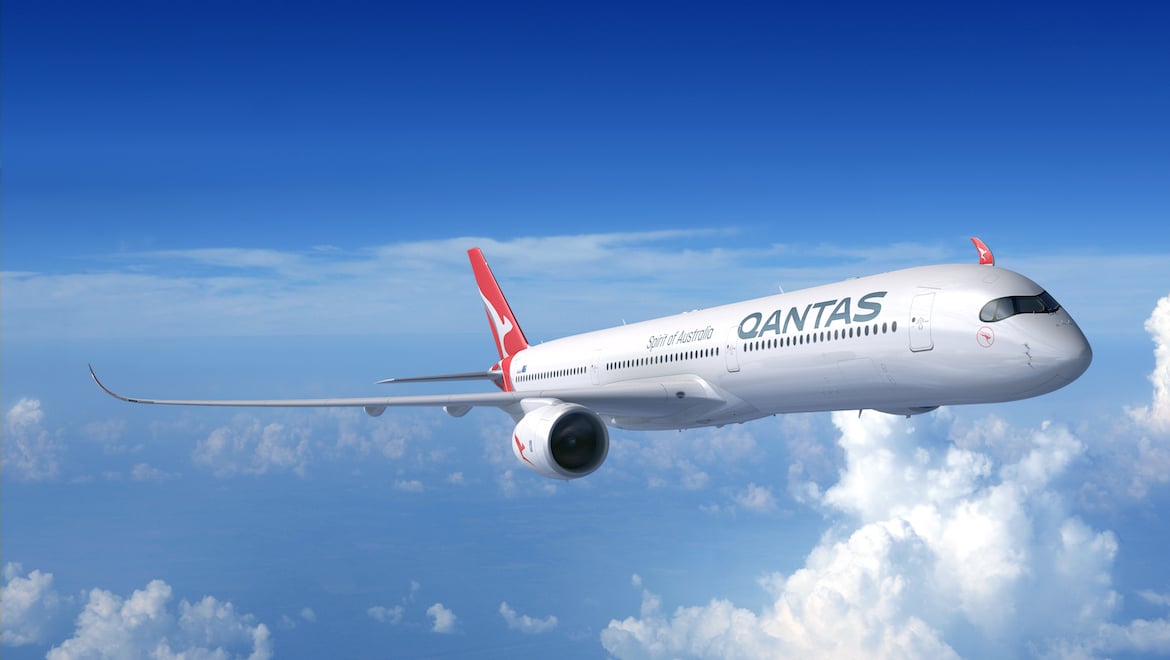
Qantas has pushed back the deadline for a final decision on whether to proceed with plans to operate nonstop flights from Australia’s east coast to London and New York by three months to March 2020.
Despite the delay, Qantas said on Friday it had chosen the Airbus A350-1000 as the aircraft to complete these ultra long-haul missions, should it opt to proceed with what it has called Project Sunrise.
No orders have been placed for the A350-1000. Instead, Qantas said Airbus had given the airline a one-month extension to March 2020 to place an order for up to 12 aircraft without impacting the proposed flights beginning in the first half of calendar 2023.
That extra time would be used to continue discussions with pilot groups for a new work contract covering the proposed ultra long-haul services, Qantas said. The Australian and International Pilots Association (AIPA) is the union representing Qantas pilots.
“The discussions are aimed at closing the last remaining gap in the Project Sunrise business case,” Qantas said.
“Qantas has put forward a number of suggestions to AIPA on how the gap might be closed while still offering three per cent annual pay increases and promotional opportunities to its long haul pilots.”
“Discussions centre on productivity and efficiency gains, including the ability to use the same pilots across its A350 Sunrise aircraft and the airline’s existing fleet of Airbus A330s.”
Further, Qantas chief executive Alan Joyce said management had offered “promotions and an increase in pay” in return for “some flexibility”, which would help lower the airline’s operating costs.
“From the outset, we’ve been clear that Project Sunrise depends on a business case that works. We’ll only commit to this investment if we know it will generate the right return for our shareholders given the inherent commercial risks,” Joyce said in a statement.
“We’ve done a lot of work on the economics and we know the last gap we have to close is some efficiency gains associated with our pilots.”

Qantas international chief executive Tino La Spina said recently the productivity improvements sought were not about pay cuts.
“We are saying, ‘yes you might have to be more productive to get the same pay’. We’re not going to apologise for that. We’ve been doing that since we started transformation,” La Spina said in November.
AIPA president Mark Sedgwick said earlier in 2019 pilots were supportive of Project Sunrise.
“We think the value to Qantas and the strategic benefit goes beyond this pilot EBA negotiation,” First Officer Sedgwick said earlier in 2019.
“Obviously we are willing to negotiate and discuss how they feel our contract may assist, but the strategic benefit to Qantas is clear and transcends the pilot contract in itself.”
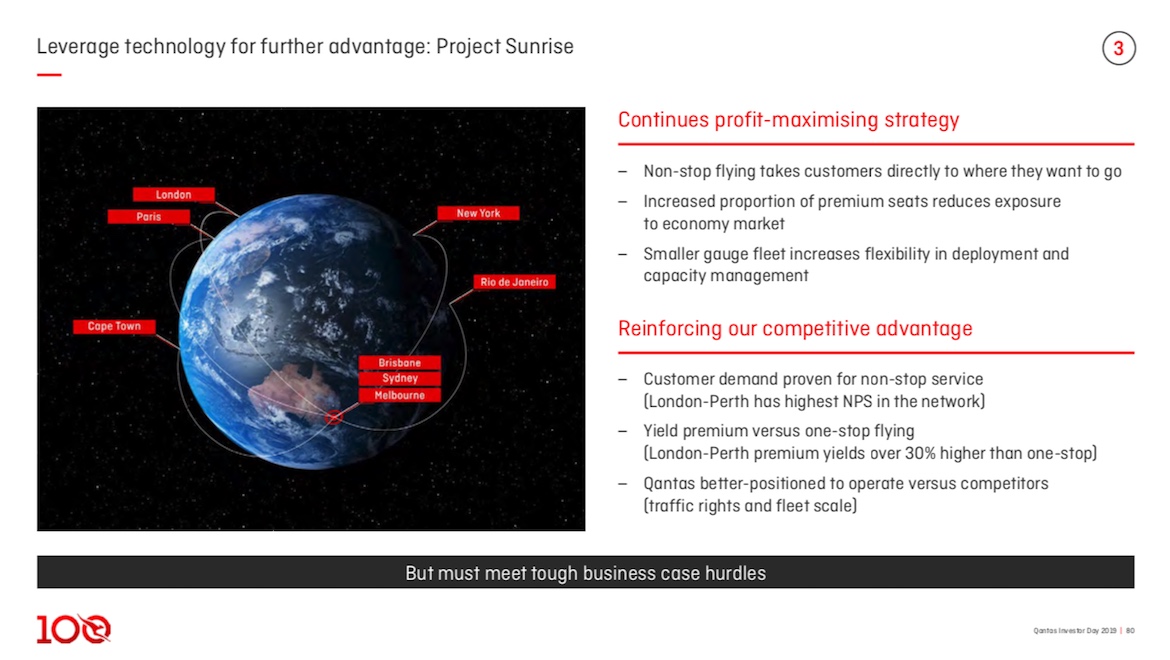
A350-1000 beat Boeing 777-8X in a tough choice: Qantas
Qantas said the A350-1000 would feature an additional fuel tank and slightly increased maximum takeoff weight to deliver the performance required for the Project Sunrise routes.
Further, the company said the Rolls-Royce Trent XWB engine used to power the A350-1000 had a strong reliability record during its two years in service.
Joyce said it was a touch choice between the A350-1000 and Boeing candidate aircraft the 777-8X.
“The A350 is a fantastic aircraft and the deal on the table with Airbus gives us the best possible combination of commercial terms, fuel efficiency, operating cost and customer experience,” Joyce said in a statement on Friday.
“The aircraft and engine combination is next generation technology but it’s thoroughly proven after more than two years in service.
“This is the right choice for the Sunrise missions and it also has the right economics to do other long haul routes if we want it to.”
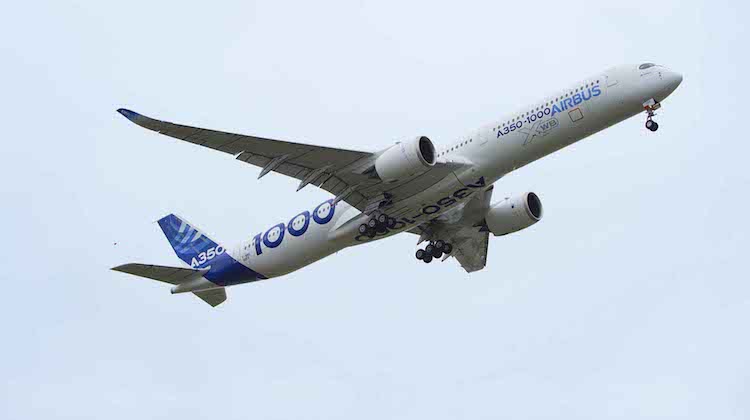
Earlier in 2019, Joyce said the technical evaluation showed Airbus and Boeing could offer an aircraft that would be able to operate a full payload between Sydney and New York.
For Sydney-London, Joyce said the aircraft would not be able to operate with a full payload. Instead, the manufacturers told Qantas they were able to achieve a payload that made the business case potentially work.
The airline said in August that Airbus and Boeing had put in their best and final offers following a request for proposal (RFP) process that covered pricing, performance guarantees and details of potential delivery streams, among other matters.
However, La Spina said in November there had been further discussions with the manufacturers since those best and final offers were submitted.
“We’ve asked them to go back and re-look at that, to sharpen their pencils, because there still was a gap there,” La Spina said.
“That is just not around price. That covers things like guarantees, the what ifs, because this aircraft is going to be in the fleet for the next 20 years and we want to cover off eventualities.”
New York-Sydney measured 8,646nm, according to the Great Circle Mapper, while London-Sydney was 9,188nm.
Earlier in 2019, Airbus outlined it was working on increasing the maximum takeoff weight of the A350-1000 to 319 tonnes, from 316 tonnes currently.

In addition to securing the right deal from the aircraft manufacturer and an agreement with pilots, Qantas has said previously the Project Sunrise business case also relied on discussions with the regulator on ultra long-haul duty hours and fatigue risk management, the right onboard products to secure a sufficient revenue premium over one-stop alternatives, and a new enterprise agreement with pilots.
On the question of regulatory approval, Qantas said Australia’s Civil Aviation Safety Authority (CASA) had “provisionally advised” that it expected no obstacles to giving the proposed ultra long-haul flights the green light, based on information already provided on the airline’s fatigue risk management system.
Currently, the maximum duty hours for pilots and cabin crews was set at 18 hours. In 2018, CASA allowed Qantas an exemption for Perth-London Heathrow flights that increased the limit to 19 hours and 50 minutes and added other mitigation measures specific to the route.
The regulator will have to move even further for nonstop flights from Australia’s east coast to London and New York.
The first two of a planned three Project Sunrise research flights were conducted in October (New York JFK-Sydney) and November (London Heathrow-Sydney). A third (New York JFK-Sydney) was planned for later in December.
Qantas said the three flights would produce thousands of data points on crew and passenger wellbeing, which would be used as part of final discussions with CASA.
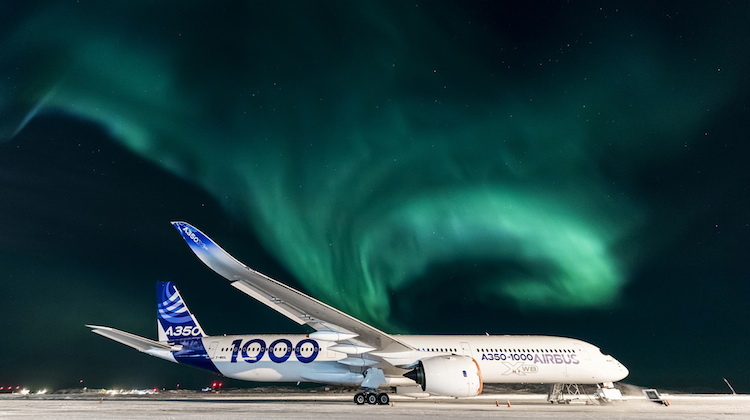
Does choosing the A350-1000 point to future widebody replacement plans?
While any initial order, should Project Sunrise be given the green light, would be for up to 12 aircraft, the disclosure on Friday that negotiations with pilots had included the flexibility for them to potentially fly both the A350 and A330 fleet has given an insight into Qantas’s thinking for its future widebody fleet.
Having the A350-1000, which has a range of up to 8,700mm when carrying between 350 and 410 passengers in a typical three-class configuration, in the fleet suggested the twin-engine widebody was a potential replacement for Qantas’s 12 A380s, which are between eight and 12 years and are being reconfigured to carry 485 passengers in four classes.
Meanwhile, the A350-900 – Airbus figures showed the aircraft could fly up to 8,100nm with 300-350 passengers in a three-class cabin – could be a candidate aircraft to replace A330s used on Qantas’s flights to Asia.
The Flying Kangaroo’s 10 A330-300s have 28 business class and 269 economy seats for a total of 297, while the 18 A330-200s have 28 business and 243 economy seats for a total of 261, or 27 business and 224 economy seats for a total of 251.

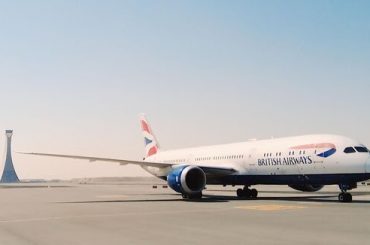










Rocket
says:Generally a Boeing supporter and would love to have seen a 777-8X or 777-9X in Qantas livery but I guess the 777 is in many ways, even in ‘X’ guise, an ‘end-of-life’ design and the A350-1000ULR is a beginning of life design so probably the no-brainer choice in the end.
Question is, does this mean the 350-1000ULR will be the eventual A380 replacement or will QF buy 777-9X’s as well???